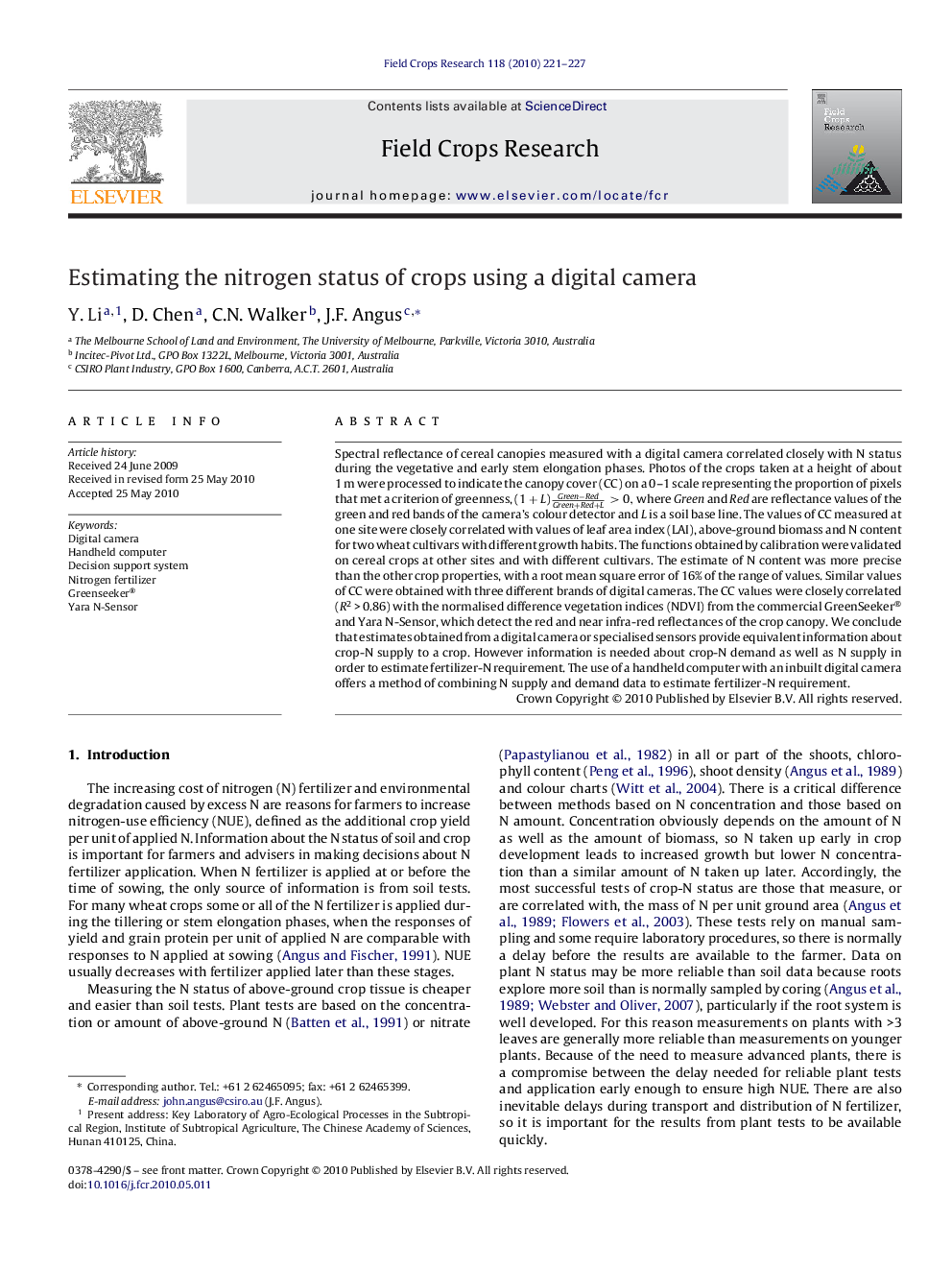| Article ID | Journal | Published Year | Pages | File Type |
|---|---|---|---|---|
| 4510940 | Field Crops Research | 2010 | 7 Pages |
Spectral reflectance of cereal canopies measured with a digital camera correlated closely with N status during the vegetative and early stem elongation phases. Photos of the crops taken at a height of about 1 m were processed to indicate the canopy cover (CC) on a 0–1 scale representing the proportion of pixels that met a criterion of greenness, (1+L)Green−RedGreen+Red+L>0, where Green and Red are reflectance values of the green and red bands of the camera's colour detector and L is a soil base line. The values of CC measured at one site were closely correlated with values of leaf area index (LAI), above-ground biomass and N content for two wheat cultivars with different growth habits. The functions obtained by calibration were validated on cereal crops at other sites and with different cultivars. The estimate of N content was more precise than the other crop properties, with a root mean square error of 16% of the range of values. Similar values of CC were obtained with three different brands of digital cameras. The CC values were closely correlated (R2 > 0.86) with the normalised difference vegetation indices (NDVI) from the commercial GreenSeeker® and Yara N-Sensor, which detect the red and near infra-red reflectances of the crop canopy. We conclude that estimates obtained from a digital camera or specialised sensors provide equivalent information about crop-N supply to a crop. However information is needed about crop-N demand as well as N supply in order to estimate fertilizer-N requirement. The use of a handheld computer with an inbuilt digital camera offers a method of combining N supply and demand data to estimate fertilizer-N requirement.
